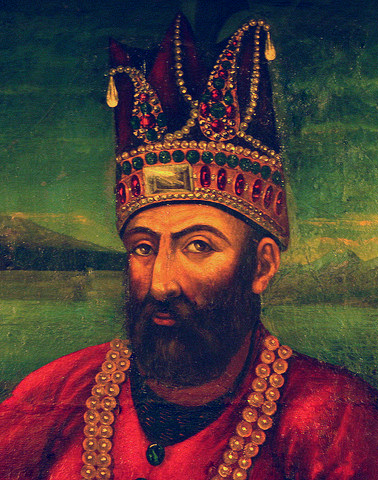Nadir Szah , także Tahmasp-Qoli Khan lub Nadir Szah Afszar
rządził jako Szach Iranu w latach 1736 – 1747 i był założycielem dynastii Afszarydów. Niektórzy historycy nazywają go ze względu na jego geniusz militarny perskim Napoleonem albo drugim Aleksandrem Macedońskim. Utworzył wielkie irańskie imperium z granicami od rzeki Indus w Pakistanie po góry Kaukaz na północy i Indie na wschodzie.
Zyskał rozgłos jako wojskowy dowódca podczas afgańskiej okupacji Iranu w latach 20. XVIII wieku. Działając w imieniu pobitych Safawidów, wyparł w 1729 Afgańczyków, a w 1732 stał się regentem państwa. W następnym roku zmusił Turków do wycofania się z Mezopotamii, którą opanowali wykorzystując kłopoty Iranu z Afgańczykami. Następnie zmusił wojska rosyjskie do wycofania się z zajmowanych przez siebie obszarów Iranu. W roku 1736 zasiadł na tronie Iranu jako Nadir Szach. Około roku 1738 podbił Afganistan, a w 1739 dokonał najazdu północnych Indii, zdobywając m.in. Delhi, stolicę Imperium Mogołów. Wkrótce rozszerzył swe panowanie na zachodni Turkiestan. Zwycięstwa Nadir Szacha uczyniły z niego najpotężniejszego władcę na środkowym wschodzie. Imperium to legło w gruzach tuż po jego śmierci w 1747, kiedy to został zamordowany. W czasie jego rządów dokonywano masowych mordów na podbitej ludności cywilnej, szczególnie niemuzułmańskiej.
Wikipedia
✵
22. Październik 1688 – 19. Czerwiec 1747
